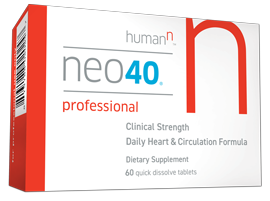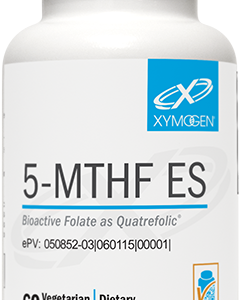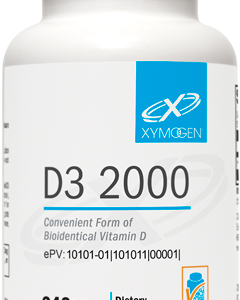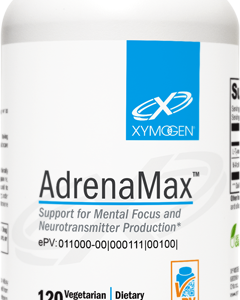Scientific Information/Data
Bio C 1:1™ is formulated to provide antioxidant protection, enhance immune function, and support synthesis and function of collagen, carnitine, and neurotransmitters. Each capsule of Bio C 1:1™ provides 500 mg of vitamin C and 500 mg of citrus bioflavonoid complex in a one-to-one ratio.* Vitamin C (ascorbic acid) is a water-soluble antioxidant vitamin that is essential to humans. While most mammals are able to synthesize vitamin C, humans must obtain it exogenously. Stress, smoking, pollution, radiation and heavy metal exposure, immune challenge, and temperature change all increase the human requirement for vitamin C. [1]Well-known functions of this ubiquitous vitamin include antioxidant protection from free radicals and oxidative processes; synthesis of collagen, carnitine, and neurotransmitters; adrenal support; and immune stimulation and support. [2-4] Vitamin C serves as a cofactor for several metabolic enzymes, including hydroxylase and oxygenase (hydroxylation reactions).*[5]
Vitamin C has long been recognized for its contribution to immune support.[3] Immune cells absorb and concentrate vitamin C. Immune cell activity, particularly T-cell function and phagocytosis, is found to be enhanced by this essential vitamin. [6-7] In early 1972, a randomized, double-blind, placebo controlled study of 1000 subjects taking 1000 mg of vitamin C per day provided support for the use of vitamin C supplementation for common immune challenges. The study results revealed that the supplementation group missed significantly fewer days from work/activities and had fewer days per episode of immune challenge; in addition, significantly more subjects taking vitamin C remained symptom free throughout the study.[8] Optimal intake of vitamin C for humans continues to be debated, though normal vitamin C synthesis in mammals such as the rat is calculated to be 26-58 mg/kg/day. Dr. Linus Pauling, in his 1970 article on evolution and vitamin C requirements, recommended a minimum intake of 2300 mg per 2500 kilocalorie intake per day for humans.*[9]
Vitamin C has far reaching effects on a number of tissues in the body because it is required for the synthesis of collagen.[4] Collagen is a fundamental component of bones, tendons, ligaments, blood vessels, skin, gums, and joints. Ultimately, the health of these tissues depends on vitamin C. Energy generation from fatty acids is vitamin C-dependent as well since synthesis of carnitine (the molecule that shuttles long-chain fatty acids into the mitochondria) requires this versatile vitamin. Vitamin C is maintained in relatively high concentrations in the brain; it is essential to maintaining healthy mood and brain function because it facilitates conversion of dopamine to norepinephrine and enhances interneuronal communication.*[10]
Bioflavonoids (also known as flavonoids) are phytochemicals that are often found together with vitamin C in nature and are generally considered to be among the most important and interesting classes of biologically active compounds in contemporary research. More than 4000 bioflavonoids have been identified. Intake of flavonoids is associated with healthy cardiovascular status, the body’s normal response to inflammation, and positive microbial balance.*[11,12]
Citrus bioflavonoids are commonly used in Europe for blood vessel and lymph system support. US practitioners utilize bioflavonoids in protocols to support tissue and joint comfort and the body’s normal response to inflammation,[13-15] respiratory [16,17] and eye health, [18] and maintenance of cardiovascular health. [19-21] Citrus bioflavonoids are able to cross the blood-brain barrier and have been recognized for their neuroprotective effects. [22]As cell-signaling agents, bioflavonoids are believed to support healthy cell growth and normal cell-life regulation, stimulate detoxification enzymes, decrease vascular cell adhesion molecules, increase vasodilation, and support healthy platelet function.*[23]
The combination of vitamin C and citrus bioflavonoids in Bio C 1:1™ Censures that a wide range of metabolic functions will be supported.*
* These statements have not been evaluated by the Food and Drug Administration.
This product is not intended to diagnose, treat, cure, or prevent any disease.
References
- Whitney EN, Rolfes SR. Understanding Nutrition. 8th ed. Belmont, CA: Wadsworth; 1998:321.
- NIH Office of Dietary Supplements. Dietary Supplement Fact Sheet: Vitamin C. http://ods. od.nih.gov/factsheets/VitaminC-HealthProfessional/. Accessed December 10, 2012.
- Schlueter AK, Johnston CS. Vitamin C: overview and update. Journal of Evidence-Based Complementary & Alternative Medicine (JEBCAM). 2011; 16(1):49-57. http://chp. sagepub.com/content/16/1/49.full.pdf+html. Accessed December 10, 2012.
- Linus Pauling Institute. Vitamin C. http://lpi.oregonstate.edu/infocenter/vitamins/vitaminC/. Updated November 2009. Accessed December 10, 2012.
- Naidu KA. Vitamin C in human health and disease is still a mystery? An overview. Nutr J. 2003 Aug 21;2:7. [PMID: 14498993]
- Chatterjee M, Dikshit M. Vitamin C mediated resistance to pathogenic invasions: possible implications during infections for better health. Proceedings of the National Academy of Sciences India. Section B, Biological Sciences. 2009; 79(1):15-25.
- Ströhle A, Wolters M, Hahn A. Micronutrients at the interface between inflammation and infection—ascorbic acid and calciferol: part 1, general overview with a focus on ascorbic acid. Inflamm Allergy Drug Targets. 2011 Feb;10(1):54-63. [PMID: 21184650]
- Anderson TW, Reid DB, Beaton GH. Vitamin C and the common cold: a double-blind trial. Can Med Assoc J. 1972 Sep 23;107(6):503-8. [PMID: 5057006]
- Pauling L. Evolution and the need for ascorbic acid. Proc Natl Acad Sci USA. 1970 Dec;67(4):1643-8. [PMID: 5275366]
- Rebec GV, Pierce RC. A vitamin as neuromodulator: ascorbate release into the extracellular fluid of the brain regulates dopaminergic and glutamatergic transmission. Prog Neurobiol. 1994 Aug;43(6):537-65. Review. [PMID: 7816935]
- Tripoli E, La Guardia M, Giammanco S, et al. Citrus flavonoids: Molecular structure, biological activity and nutritional properties: A review. Food Chemistry. 2007; 104(2):466- 79.
- Middleton E Jr, Kandaswami C, Theoharides TC. The effects of plant flavonoids on mammalian cells: implications for inflammation, heart disease, and cancer. Pharmacol Rev. 2000 Dec;52(4):673-751. Review. [PMID: 11121513]
- Guardia T, Rotelli AE, Juarez AO, et al. Anti-inflammatory properties of plant flavonoids. Effects of rutin, quercetin and hesperidin on adjuvant arthritis in rats. Farmaco. 2001 Sep;56(9):683-7. [PMID: 11680812]
- Rotelli AE, Guardia T, Juárez AO, et al. Comparative study of flavonoids in experimental models of inflammation. Pharmacol Res. 2003 Dec;48(6):601-6. [PMID: 14527825]
- Lin N, Sato T, Takayama Y,et al. Novel anti-inflammatory actions of nobiletin, a citrus polymethoxy flavonoid, on human synovial fibroblasts and mouse macrophages. Biochem Pharmacol. 2003 Jun 15;65(12):2065-71. [PMID: 12787887]
- Pijnenburg MW, Hofhuis W, Hop WC, et al. Exhaled nitric oxide predicts asthma relapse in children with clinical asthma remission. Thorax. 2005 Mar; 60(3):215-8. [PMID: 15741438]
- Lee NK, Choi SH, Park SH, et al. Antiallergic activity of hesperidin is activated by intestinal microflora. Pharmacology. 2004 Aug;71(4):174-80. [PMID: 15240993]
- Majumdar S, Srirangam R. Potential of the bioflavonoids in the prevention/treatment of ocular disorders. J Pharm Pharmacol. 2010 Aug;62(8):951-65. Review. [PMID: 20663029]
- Wright B, Spencer JP, Lovegrove JA, et al. Insights into dietary flavonoids as molecular templates for the design of anti-platelet drugs. Cardiovasc Res. 2012 Nov 1. [Epub ahead of print] [PMID: 23024269]
- Mulvihill EE, Huff MW. Citrus flavonoids and the prevention of atherosclerosis. Cardiovasc Hematol Disord Drug Targets. 2012 Oct 1. [Epub ahead of print] [PMID: 23030447]
- Soory M. Nutritional antioxidants and their applications in cardiometabolic diseases. Infect Disord Drug Targets. 2012 Nov 16. [Epub ahead of print] [PMID: 23167714]
- Hwang SL, Shih PH, Yen GC. Neuroprotective effects of citrus flavonoids. J Agric Food Chem. 2012 Feb 1;60(4):877-85. doi: 10.1021/jf204452y. Epub 2012 Jan
- Review. [PMID: 22224368] 23. Linus Pauling Institute. Micronutrient Information Center. Flavonoids. http://lpi.oregonstate. edu/infocenter/phytochemicals/flavonoids/. Updated June 2008. AccessedDecember 10, 2012.
Additional references available upon request.






